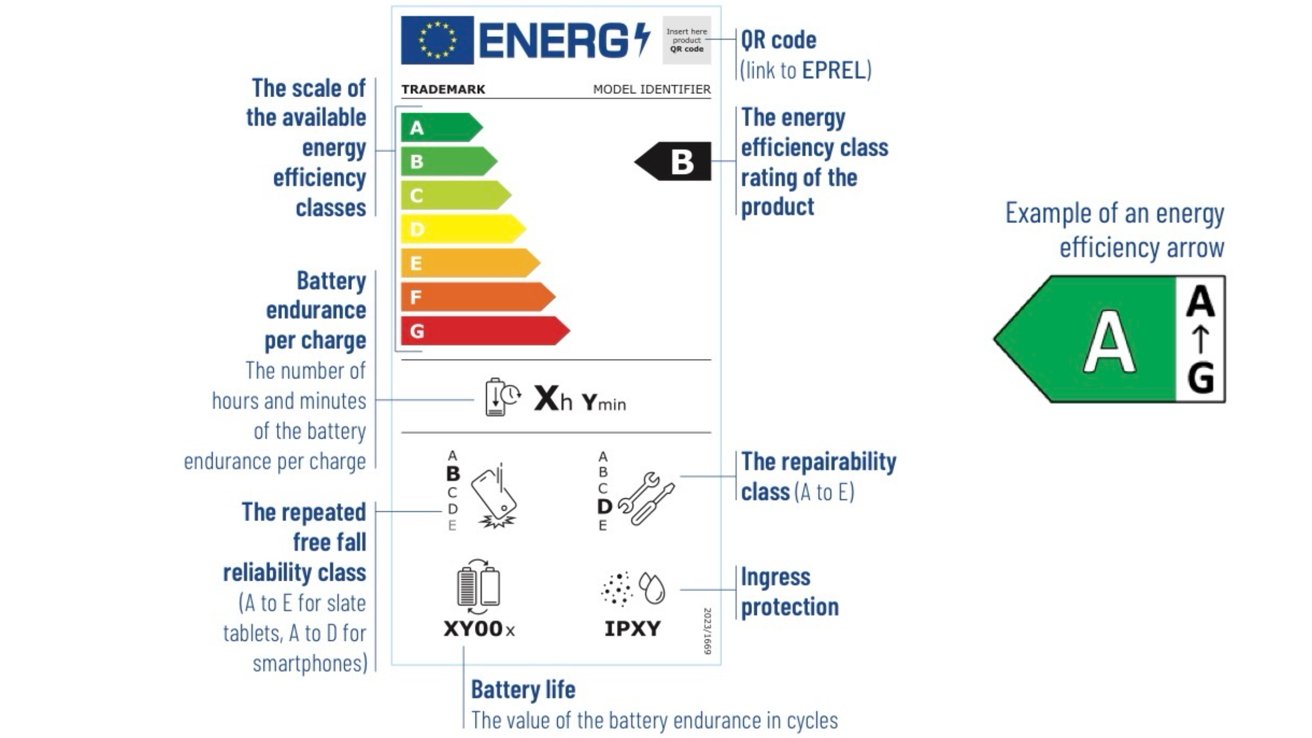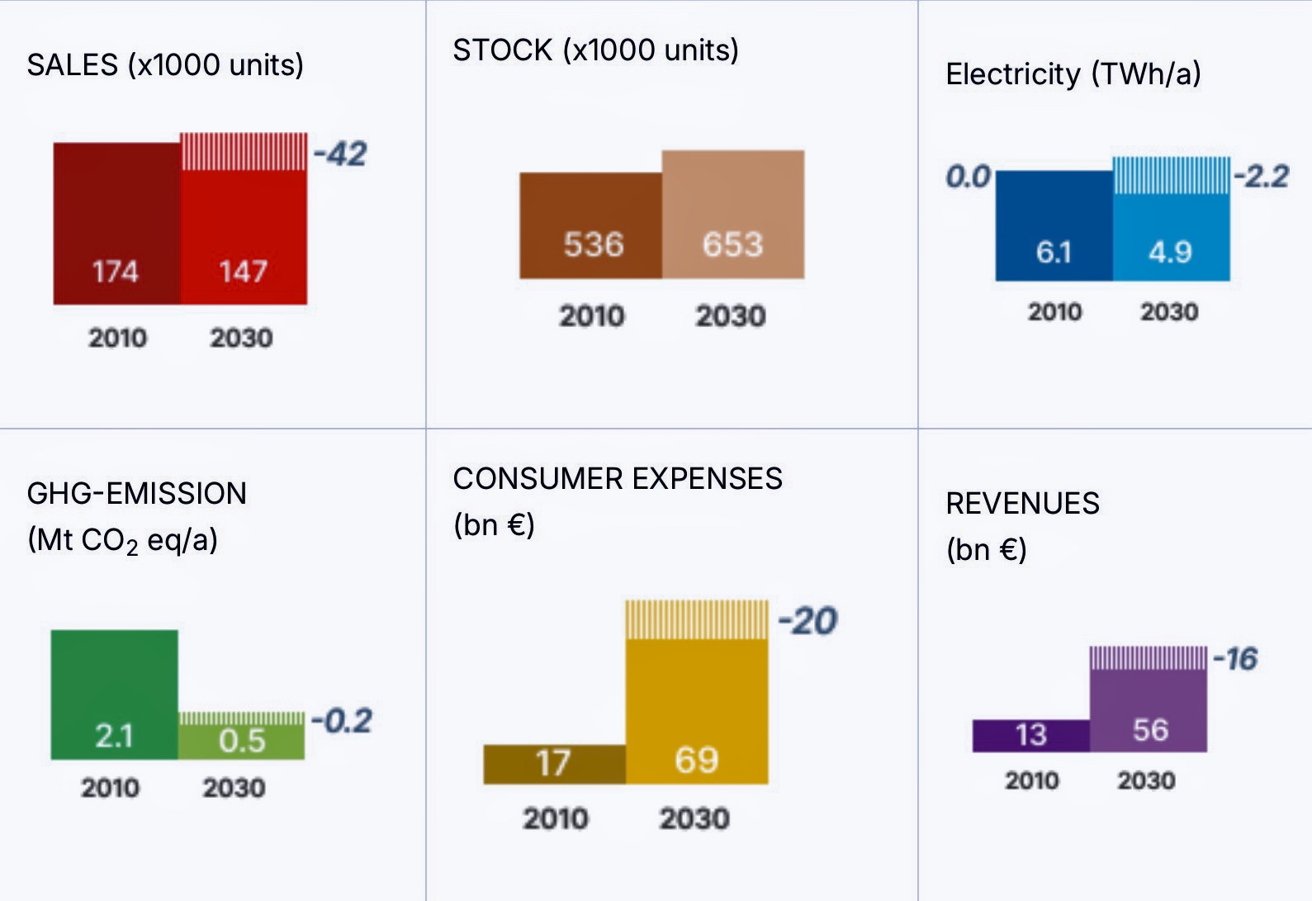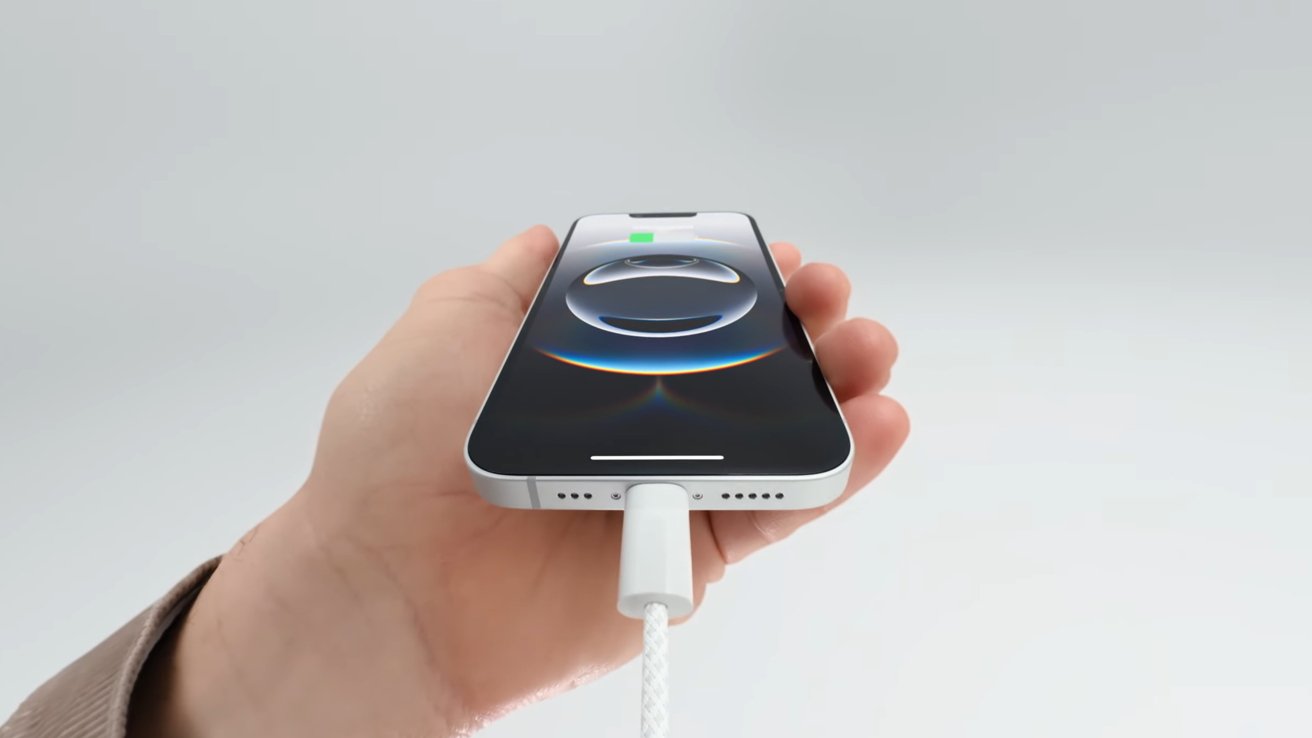Apple devices in EU getting repair scores & battery life labels
Apple buyers in Europe will soon see repair scores, battery ratings, and energy labels on every new iPhone and iPad.

Apple buyers in Europe will soon see repair scores
Starting June 20, 2025, the European Union will require smartphones and tablets to meet strict sustainability standards and display detailed energy labels at the point of sale. These labels will feature scores for battery life, durability, and repairability.
The move is part of the EU's Green Deal and is designed to reduce waste, extend product lifespans, and help consumers make more informed choices.
Many of the upcoming rules align with Apple's existing practices. Most iPhones receive software updates for more than five years.
Apple also offers official repair services, a self-service repair program, and access to genuine parts for out-of-warranty devices.
Battery requirements may be the one area where formal testing becomes more important. The new regulation states that batteries must retain at least 80% of their original capacity after 800 full charge cycles.
Apple publishes battery specifications online, but the company may need to ensure compliance with the new EU testing framework.
The mandate for spare parts goes slightly beyond Apple's current policy. Manufacturers will be required to make key components available for seven years after the last unit of a model is sold in the EU.

Effects of the regulations. Image credit: Ecodesign Impact Accounting Overview Report 2024
While Apple generally supports products for five to seven years, the rules now codify and enforce that timeline.
New energy label will guide consumer decisions
Smartphones and tablets sold in the EU will come with a standardized label showing various attributes.
- Energy efficiency class (A to G)
- Battery life per charge, shown in hours and minutes
- Battery longevity in charge cycles
- Repairability score (A to E)
- Drop resistance rating
- Ingress protection score for dust and water
Each label will also include a QR code linking to the European Product Registry for Energy Labelling. Consumers will be able to compare technical specifications and environmental scores across different models before purchasing.
The regulation applies to smartphones, feature phones, cordless phones, and slate-style tablets sold in the EU beginning June 20, 2025.
It excludes devices with rollable displays, tablets running desktop-class operating systems like Windows, and specialized secure communication devices.
A review of the regulation is scheduled for 2027, giving the European Commission a chance to update the requirements based on technological progress.
Major savings expected across the EU
Officials estimate that the new rules will reduce primary energy use by 8.1 terawatt-hours annually by 2030. That figure doesn't include production or standby savings.

The move is part of the EU's Green Deal
When those are factored in, the total climbs to nearly 14 terawatt-hours per year, or roughly one-third of today's energy use for mobile devices in Europe.
The financial savings are also notable. European households are expected to save 20 billion (about $21.4 billion) per year by 2030, with most of that coming from less frequent device purchases.
The average household is projected to save about 98 (around $105) annually.
What this means for Apple's business
Apple has made environmental initiatives a central part of its product strategy. The company promotes its carbon-neutral goals, use of recycled materials, and efficient supply chains.
The new EU rules will add another layer, emphasizing longevity and repairability alongside energy use.
In response, Apple may need to expand its sustainability efforts. These include using spare parts availability, adjusting how long it offers OS updates for certain models, and reevaluate design elements that complicate repair.
Read on AppleInsider

Comments
All that will happen is the power companies will raise their prices due to consumers using less power.
It happens here in New Zealand where power companies increase prices in winter to rort the consumer claiming we’re using more power than they can generate. Except New Zealand can produce more power than it actually needs.
Welcome to the wonderful world of markets. Don’t even get me started on how we pay international market rates for New Zealand beef and lamb internally.
This is not about saving money; it’s about how much energy the devices use, just as with refrigerators, clothes washers, etc.